
Connecting our Wisest and our Youngest
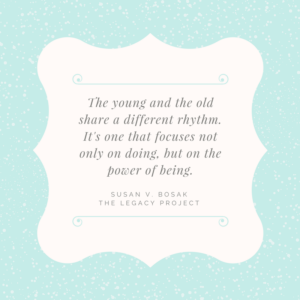 When one comes into Creating Together, they would likely see caregivers from a wide range of ages with the children. How lovely to see grandparents with their grandchildren, eyes smiling as they bond at the centre.
When one comes into Creating Together, they would likely see caregivers from a wide range of ages with the children. How lovely to see grandparents with their grandchildren, eyes smiling as they bond at the centre.
This intergenerational connection brings out a better quality of life for all ages. For the young, it improves self-esteem, empath, respect, and a healthier approach to aging. For the wise, it contributes to joy, meaning, improved memory and active living. On a community level, connecting our wisest and our youngest promotes the transmission of cultural traditions and values from older to younger generations, helping to build a sense of personal and societal identity while encouraging tolerance.
Join Creating Together at White Eagle Residence this Thursday
Apart from offering a space within our community for different ages to come together, Creating Together also spends Circle Time with the senior citizens at White Eagle Residence once per month. They sing songs together, read stories and chat with the residents. This month, they’ll be going over on Thursday November 24th – so do consider joining them! You can either walk there with us from Creating Together, or meet us directly at White Eagle Residence (138 Dowling) at 10:45am. If you can’t make it this month, keep an eye on our calendar for our next visit.
Tips for Grandparents and other Older Adults
The Healthy Aging Partnership offers these suggestions for grandparents and others who want to play a bigger role in young lives:
- Be yourself. Youngsters will benefit from and enjoy having someone who listens and gives them their undivided attention. All too often parents don’t have enough time to spend with their children and that’s where you can help. Be a mentor and a friend.
- Arts and crafts, such as making a scrapbook, create great memories and allow you and a child to learn something new together.
- Youngsters love to help in the kitchen. The hands-on cooking exercise can be as simple as baking a box cake, with a little measuring and mixing.
- Gardening is another kid favorite. Dig in the dirt. Plant. Water. Sow fast-sprouting bean, pumpkin or sunflower seeds that grow with every visit.
- Go to the library. Computers and video games may be the new thing, but you can never go wrong with a great story. Teach them about something you love. If you’re excited about it, they will be too.
- If you don’t have grandchildren of your own, volunteer to share an interest or skill with a local youth organization. The American Red Cross, Intergenerational Innovations and Big Brothers, Big Sisters, just to name a few, can help connect older adults with young people in their community.
References and Resources
The Legacy Project: http://www.legacyproject.org/guides/intergenbenefits.html
Healthy Aging Partnership: For more information on intergenerational activities or other issues related to life as an older adult, visit www.4elders.org. The free and confidential resource line offers a wealth of information and assistance to seniors and their caregivers.
Happy Diwali!
Diwali, also known as the festival of lights, is an ancient Hindu festival celebrated in autumn every year. The festival spiritually signifies the victory of light over darkness, knowledge over ignorance, good over evil, and hope over despair. Diwali celebrations may vary in different communities but its significance and spiritual meaning is generally “the awareness of the inner light”.
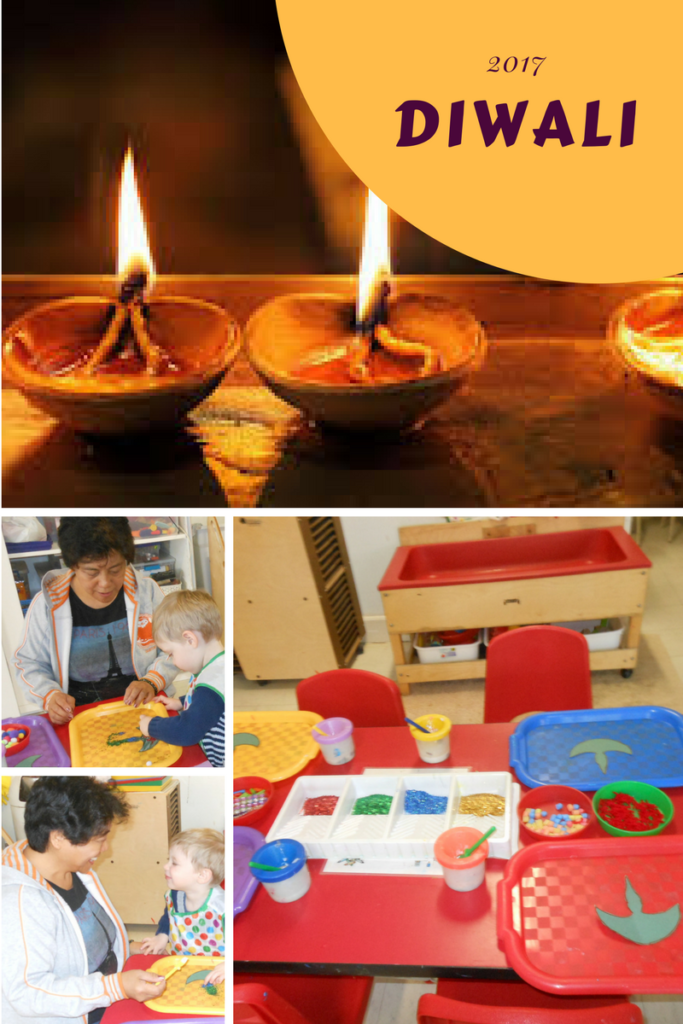 Observed in accordance with the lunar calendar, Diwali was celebrated on October 18th this year, and across Toronto, various community groups, businesses, schools and associations celebrated. Creating Together was no exception. With over 2000 people identifying as Hindu in the Parkdale-High Park area alone, our local Diwali celebrations fostered a sense of home and community for those who observe the holiday, while also increasing awareness among all of the children, parents and caregivers who observe other holidays. Our student Neetu planned and implemented a number of activities, including decorating paper diyas, and making sure families enjoyed food and sweets.
Observed in accordance with the lunar calendar, Diwali was celebrated on October 18th this year, and across Toronto, various community groups, businesses, schools and associations celebrated. Creating Together was no exception. With over 2000 people identifying as Hindu in the Parkdale-High Park area alone, our local Diwali celebrations fostered a sense of home and community for those who observe the holiday, while also increasing awareness among all of the children, parents and caregivers who observe other holidays. Our student Neetu planned and implemented a number of activities, including decorating paper diyas, and making sure families enjoyed food and sweets.
According to Penn State Extension, children begin to notice gender and racial differences at about age 2, gender labels (boy/girl) and colours (including those applied to skin colour) at about 2 ½, and by 4-5 years, they start to display gender appropriate behavior and become fearful of differences.
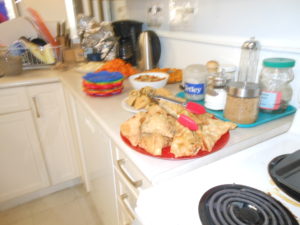 Diversity activities teach young children to respect and celebrate the differences in all people, while also helping them understand who they are the context of race, ethnic group, culture, religion, geography, language and familial history. It helps them realize that we’re all humans, despite differences in how we look or dress, or what we eat or celebrate. Games and activities offer a fun way for young children to learn about differences and similarities among people and to introduce the concept of diversity. In so doing, we support them in their own identity formation and sense of belonging within the context of a diverse community.
Diversity activities teach young children to respect and celebrate the differences in all people, while also helping them understand who they are the context of race, ethnic group, culture, religion, geography, language and familial history. It helps them realize that we’re all humans, despite differences in how we look or dress, or what we eat or celebrate. Games and activities offer a fun way for young children to learn about differences and similarities among people and to introduce the concept of diversity. In so doing, we support them in their own identity formation and sense of belonging within the context of a diverse community.
Thank you to all of you who came out to enjoy Diwali with Creating Together this year.
May joy, prosperity, and happiness illuminate your life and your home!
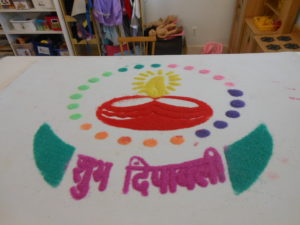
Resources:
Public Broadcasting Sysyem. “Diversity in the Classroom.” Precious Children. www.pbs.org/kcts/preciouschildren/diversity/
Biles, Barbara. “Activities that promote racial and cultural awareness.” In “Family Child Care Connections” edited by C. M. Todd 4(3): 4. Urbana-Champaign, IL: University of Illinois Cooperative Extension Service, 1994. Retrieved September 2012. http://www.pbs.org/kcts/preciouschildren/diversity/read_activities.html
Children book list to celebrate diversity for children: Check out this article by Madh Mama
Halloween Costume Party!
All day on October 31st, children poured into Creating Together with their adorable costumes, enjoying the Halloween decorations and activities that the staff put together for them.
Take a look at these snapshots of some of the fun had!

Where did the costume dressing tradition? Like the tradition of carving pumpkins, this is a Celtic tradition, where people would dress in disguise to fool and ward off the spirits, hoping to protect their land through the upcoming winter. The word Hallowe’en is a modernization of “Hallow Eve”, a name still used by some older people in Ireland to mean All Hallows Eve, the evening before All Saints Day on November 1. Traditionally, this time of year marked the farmer’s festival Samhain, which literally means “summer’s end” – it is also the word for November in Irish and Scots Gaelic.

Here’s another interesting Canadian fact: The earliest known reference to what is now “trick or treating” in Canada, occurs in 1911, when a newspaper in Kingston, Ontario, reported that it was normal for the smaller children to go street “guising” on Halloween between 6:00 and 7:00 P.M., visiting shops and neighbors to be rewarded with nuts and candies for their rhymes and songs. The earliest known use in print of the term “trick or treat” appears in 1927, from Blackie, Alberta.
References:
http://canadachannel.ca/todayincanadianhistory/index.php/Halloween
Welcome Neetu!

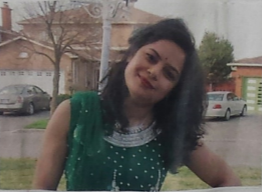 Neetu Malhorta is joining us from Humber College’s Early Childhood Education Program. Her goal is to pursue a career as a teacher, and she’s very much looking forward to providing a safe, warm, and welcoming environment for children and families at Creating Together.
Neetu Malhorta is joining us from Humber College’s Early Childhood Education Program. Her goal is to pursue a career as a teacher, and she’s very much looking forward to providing a safe, warm, and welcoming environment for children and families at Creating Together.
Neetu comes with over 10 years of experience working with children in India, and also brings a belief in the power of positive thinking and deep relaxation as tools for achieving happiness!
A warm welcome to you, Neetu – we are all so glad to have you at Creating Together!
- « Previous Page
- 1
- …
- 40
- 41
- 42
- 43
- 44
- …
- 52
- Next Page »
